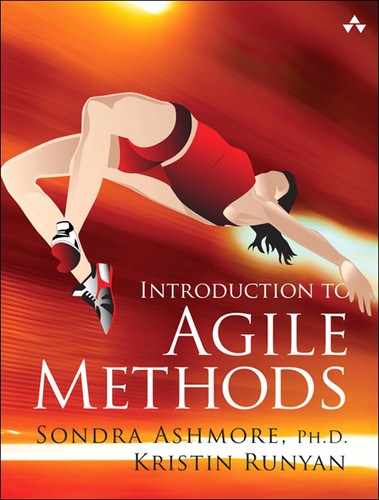Book Description
A Thorough Introduction to the Agile Framework and Methodologies That Are Used Worldwide
Organizations of all shapes and sizes are embracing Agile methodologies as a way to transform their products, customer satisfaction, and employee engagement. Many people with varying levels of work experience are interested in understanding the architecture and nuances of Agile, but it is difficult to know where to start. Numerous practitioner books are available, but there has never been a single source for unbiased information about Agile methodologies–until now. Introduction to Agile Methods is the place to start for students and professionals who want to understand Agile and become conversant with Agile values, principles, framework, and processes.
Authors Sondra Ashmore and Kristin Runyan use academic research and their own experiences with numerous Agile implementations to present a clear description of the essential concepts. They address all key roles and the entire development life cycle, including common roadblocks that must be overcome to be successful. Through the authors' realistic use cases, practical examples, and thought-provoking interviews with pioneering practitioners, complex concepts are made relatable. No matter what your role or level of experience, this book provides a foundational understanding that can be used to start or enhance any Agile effort.
Coverage includes
How Agile compares with the Waterfall method and when to use each
Why Agile demands a cultural transformation–and how that looks to each participant
Comparing various Agile methodologies, including Scrum, Kanban, Extreme Programming (XP), Crystal, Feature Driven Development (FDD), Lean, and DSDM
Understanding the roles within Agile and how they work together to create superior results
Agile approaches to requirements gathering, planning, estimating, tracking, reporting, testing, quality, and integration
Extending Agile beyond IT
Table of Contents
- About This eBook
- Title Page
- Copyright Page
- Dedication Page
- Contents
- Preface
- Acknowledgments
- About the Authors
- Chapter 1. The History and Value of Agile Software Development
- Chapter 2. Organizational Culture Considerations with Agile
- Chapter 3. Understanding the Different Types of Agile
- Extreme Programming (XP)
- Scrum
- Feature-Driven Development
- Dynamic Systems Development Method
- Lean Software Development
- Kanban Method
- Crystal Family
- Certification
- Implementing Tools and Techniques at Cayman Design
- Conclusion
- Summary
- Interview with Alistair Cockburn
- References and Further Reading
- Review Questions
- Chapter 4. Describing the Different Roles
- Chapter 5. The New Way to Collect and Document Requirements
- Old Form of Requirements Gathering
- Agile Requirements in Scrum
- Additions and Considerations from the Other Methodologies
- Enhancing Requirements
- From User Stories to Deliverables
- Communication
- Lean Product Development and the Minimum Viable Product (MVP)
- Conclusion
- Summary
- Interview with Ellen Gottesdiener and Mary Gorman
- References and Further Reading
- Review Questions
- Chapter 6. Grooming and Planning
- Product Backlog (Scrum and XP)
- Prioritization of Stories
- Estimating
- Scrum: Product Backlog Grooming
- Scrum: Sprint Planning
- Extreme Programming: XP Planning Game
- Maintenance of Legacy Code
- Triple Constraints
- Kanban
- Conclusion
- Summary
- Interview with Mike Cohn
- References and Further Reading
- Review Questions
- Chapter 7. Testing, Quality, and Integration
- Chapter 8. Tracking and Reporting
- Chapter 9. Agile beyond IT
- Appendix. John Deere Case Study
- Glossary
- Index
